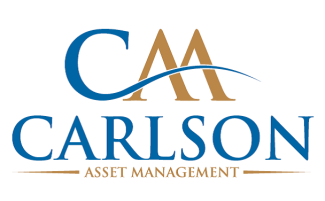One of the Most Important Things I Do for You
“To know value, is to know the meaning of the market.” – Charles Dow
Over the last 30 days, you’ve probably seen or heard some combination of the following predictions:
If someone were to put you in a room and force you to do nothing but read headlines and predictions, you’d probably get whiplash… And depending on your political ideology, you may find one scenario or the other to be more likely. There’s a lot of conflicting information and analysis out there about what’s happening, or what’s going to happen. In this letter, I want to briefly recap a few of the stories behind the uncertainty.
|
Scenario 1 |
Scenario 2 |
|
The markets will go up |
The markets will go down |
|
The Trade War will get better |
The Trade War will get worse |
|
Tariffs will have little effect on the markets |
Tariffs will destabilize markets |
|
The Fed will lower interest rates |
The Fed will keep interest rates the same |
|
The economy will remain strong |
The economy will veer closer to recession |
The Trade War
The long running Trade War with China blew up in a big way last month – and then expanded into a two front trade war with our neighbors to the south. Early in May, President Trump placed a new 25% tariff on all Chinese imports that had been previously been spared. Soon after, China responded with more tariffs of their own. Then, just as the smoke started to clear from that announcement, the White House announced a new set of tariffs – this time on Mexico. With over $50 billion a month moving back and forth across the border every month. Higher tariffs on Mexican products could potentially have a major impact on the economy. Many American businesses rely heavily on everything from Mexican cars to Mexican food and appliances. However, the news broke out on Friday, June 7, that the tariffs on Mexico will not come to pass – at least for the time being. The White House says that tariffs will not be placed on Mexico as long as Mexico keeps up their end of the bargain and stems the flow of illegal immigrants.
The Economy
After nearly a decade long bull market, there are signs of a slowing economy. Economists use various indicators to forecast where the economy will go. One indicator is the job market. While the nation’s unemployment rate remains historically low at 3.6%, fewer and fewer new jobs are being added. In May for example, the economy added only 75,000 new jobs, which seems like a lot but was far less than the 180,000 most experts predicted. Another indicator is the yield on U.S. Treasury bonds. To put it simply, the yield is the return you get on a bond. Bond yields will fall when bond prices – the amount you pay when you purchase a bond – go up. Bonds are often perceived by investors as being less risky than stocks, so during times of uncertainty, more and more investors will pile into bonds, driving up the price and driving down the yield. Got all that? If not, that’s okay, because here’s what really matters. When the yield on short-term Treasury bonds rises higher than the yield on long-term bonds, economists call this an “inverted yield curve,” It is rare, and sometimes signals an impending recession. An inverted yield curve is happening now. However, despite the inverted yield curve, the ten-year treasury is still at nearly a 2-year low, mortgage rates are therefore much lower and homes are selling like crazy. Another positive note is the high consumer confidence levels, high GDP, and nearly level inflation rate despite all the economic growth. In short, the economy is doing very well with some indicators showing a slowing economy to come.
With all of the uncertainty in the economy and the markets, we need to be mindful of our own portfolios and we can do to protect ourselves. At Carlson Asset Management, we specialize in Risk Management. Risk management is the process of identifying, analyzing, accepting, and then working to mitigate the risks that come with uncertainty. It’s one of the most important things I do for clients like you! Standard disclaimer: All investing involves some risk. It’s impossible to get rid of it entirely –nor would we want to! (It’s a truism that no risk means no reward.) But we can take steps to manage your risk, and that’s what my team and I do every day.
Rules-Based Investing and a Sell-Side Discipline
These are just fancy terms for something very simple. Using technical analysis through point and figure charting, we put rules in place that determine when to sell an investment if it falls below a certain price or makes a “sell signal” and conversely we have rules in place to buy certain investments when the break above a certain price and initiate a “buy-signal.” There are sometimes exceptions we make for these rules, but when we do it, it is in consideration of the risk profile of the client as well as value we see in the position. While we can’t control whether an investment will grow or not, we can take steps to protect you from losing your principal. The ancient Greek physician, Hippocrates, had a maxim: “First, do no harm.” I take a similar view. While we want to help you grow your money, we’re dead set on protecting and growing your money.
Monitor trends by tracking supply and demand
Risk management is sort of like buying strawberries. When you go to the store, you might ask yourself, “Is it worth it to buy strawberries today?” The answer would depend on lots of things. Are strawberries in season? Are they more or less expensive than usual? Do they look ripe? That’s how you determine whether buying strawberries is worth the risk or not. We do the same thing with the investments in your portfolio. We look at whether there’s more supply or more demand for an investment – more buyers or more sellers – to determine whether that investment is trending up or down. We look at how strong or weak an investment is relative to other investments that are similar to it. We look at how close it is to the buy/sell price we’ve already established.
Currently, when we look at what is “in season,” it hasn’t changed much since my last letter of correspondence. US Equities are still entrenched at the top position with international equities right behind. Offense is on the field and equities are in season.

When a take a closer look at US Equities, technology has the most relative strength followed by industrials, utilities, and communication services.

While we can’t know for certain how the Trade War will affect the markets, or whether the economy will veer into a recession, that doesn’t mean we’re sitting idle. I want you to know that my team and I are working constantly to analyze how these stories could affect your hard-earned money. We’re always working to manage the risk in your portfolio. To keep you on track to your financial goals. Sometimes, we try to speed up the journey. Sometimes, we may slow down, or move off the road entirely. But we always try to keep you pointed in the right direction. If you ever have any questions or concerns, please contact me. In the meantime, I hope you enjoy a wonderful summer!
Sincerely,

Bruce Carlson, CFP®
President
Carlson Asset Management
“Trump Renews Trade War as China Talks End Without a Deal,” The NY Times, May 10, 2019. https://www.nytimes.com/2019/05/10/us/politics/trump-china-trade.html?module=inline
“Trump says US will impose 5% tariff on all Mexican imports” CNBC May 30, 2019 https://www.cnbc.com/2019/05/31/trump-says-us-will-impose-5percent-tariff-on-all-mexican-imports-from-june-10.html
“US, Mexico Reach Deal to Avoid Tariffs,” The Wall Street Journal, June 8, 2019. https://www.wsj.com/articles/trump-saysu-s-has-reached-deal-with-mexico-11559954306
“U.S. Added 75,000 Jobs in May as Hiring Slowed,” The Wall Street Journal, June 7, 2019. https://www.wsj.com/articles/u-smay-nonfarm-payrolls-increased-by-75-000-11559910687
“Bond Yields Extend Drop Toward 2%,” The Wall Street Journal, June 7, 2019. https://www.wsj.com/articles/bond-yieldsextend-drop-toward-2-11559929639
The opinions expressed in this commentary are those of the author and may not necessarily reflect those held by Kestra IS or Kestra AS. The material is for informational purposes only. It represents an assessment of the market environment at a specific point in time and is not intended to be a forecast of future events, or a guarantee of future results. It is not guaranteed by Kestra IS or Kestra AS for accuracy, does not purport to be complete and is not intended to be used as a primary basis for investment decisions. It should also not be construed as advice meeting the particular investment needs of any investor. Neither the information presented nor any opinion expressed constitutes a solicitation for the purchase or sale of any security.

